Tech Support: Fuel System Components
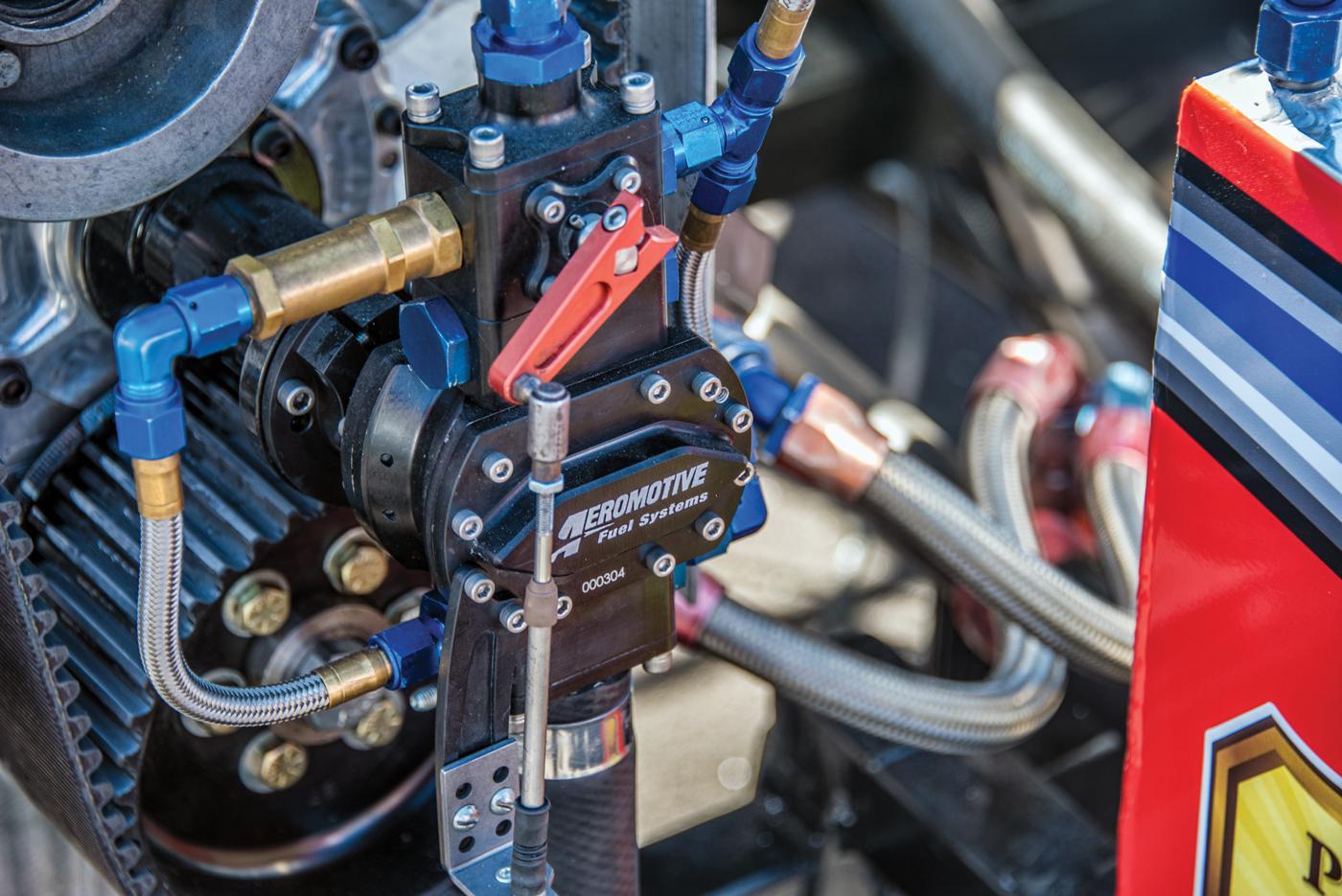
It takes a village of parts to build a winning system, and today’s aftermarket tech reps are equipped to provide the clearest path toward optimizing all products involved.
The impact of fuel injection, both electronic and mechanical, was never more apparent than in August on the Bonneville Salt Flats, where 72-year-old George Poteet and his Speed Demon streamliner jolted the AA/BFS land-speed record from 417.020 mph up to 470.015 mph, posting an astounding final exit speed of 481.576 mph. That’s the fastest any piston-engine, wheel-driven vehicle has ever been recorded on land.
Powering the Speed Demon is a twin-turbo 557-cubic-inch big block Chevy engine that pumps out more than 3,000 horsepower with around 30 pounds of boost. Built by Kenny Duttweiler, the engine features a unique hybrid fuel system with 16 electronic injectors and eight mechanical injectors to feed methanol into the cylinders. And it’s a thirsty motor!
“Coming out of mile five, 11.5 gallons of fuel per minute were flowing to the engine,” said Shane Tecklenburg, who helped tune the fuel-injection system and noted that the car even needed a compound approach to the fuel-pump strategy. “There was an Aeromotive electric pump to start the engine, and then a Waterman cable-driven mechanical pump takes over for the run.”
Basically, the electronic injectors are used for startup and low speeds. Based on rpm, throttle position and boost, the mechanical system will kick in and match a certain flow. At the same time, the electronic injectors will subtract its fuel delivery by an equal amount so that the mixture is never deviated during the transition. Now the team has “controllable and tunable overhead” to make adjustments with the electronic system as the speed continues to increase.
The brain of any EFI system—that is, the ECU—usually gets most of the headlines when reviewing an electronic-based fuel-delivery setup. However, supporting equipment is absolutely critical to achieving optimum performance.
“We look at what’s required in terms of flow and pressure, and we produce a fuel pump to meet those requirements,” explained Brett Clow of Aeromotive, Lenexa, Kansas. “With that done, the rest of the fuel system is dictated by that fuel pump. How big do the lines and fittings need to be? How much flow do the pre- and post-pump filters have to handle? And then we look at the regulator. People ask why we have so many regulators. It’s because we have so many pumps.”
Matching components to build a winning fuel system certainly takes a team effort, especially with so many new features being built into today’s sophisticated systems.
“At the racer level, the ECU controls spark, fuel, [and] boost, and supports other strategies in the background,” said Sam Chaysavang of AEM Performance Electronics, Hawthorne, California. “There’s still development in adding more features and support for new products and strategies.”
That means more complex systems are on the horizon for racers not bound by rules that choke innovation. Selecting the ECU is most likely the fun part of the build, but then working with manufacturers and their tech reps becomes essential when selecting all the supporting equipment.
“We had a customer who wanted to convert his Harley EVO to fuel injection,” Clow recalled. “Without carbs, he was able to put a lot more air into the engine, and we had to match it with fuel. The challenge was packaging—where to fit everything from adapting a -8 AN fitting at the fuel tank, to supporting an external fuel pump and finding the smallest regulator.”
With those thoughts in mind, we set out to discover what questions tech departments of fuel components suppliers (with an emphasis on the supporting equipment needed to build a performance fuel system) have spent the most time answering. This Q&A sampling by no means addresses the gamut of fuel-system challenges, but it does underscore the need to work closely with aftermarket tech reps to build the right system for each application.
Does increasing system fuel pressure increase injector flow?
We still have to be mindful of the maximum pressure an injector is rated for, but yes, increasing fuel pressure can increase the flow of a fuel injector. Our Holley EFI injectors are rated at 43 psi, but some customers choose to run their system pressure (regulator) at 60 psi. How do you calculate the new flow? We need to find the square root of the difference in pressure, then multiply that value by the flow of our injector.
As an example, let’s use our 48 lb/hr injector (48 lb/hr @ 43). The square root of (60/43) is about 1.181, multiplied by the previous rated flow of 48 gives us a new rated flow of 56.7 lb/hr (@ 60 psi). A simple adjustment could help a customer hold off on upgrading injectors for a time. —Holley Performance Products (Bowling Green, Kentucky)
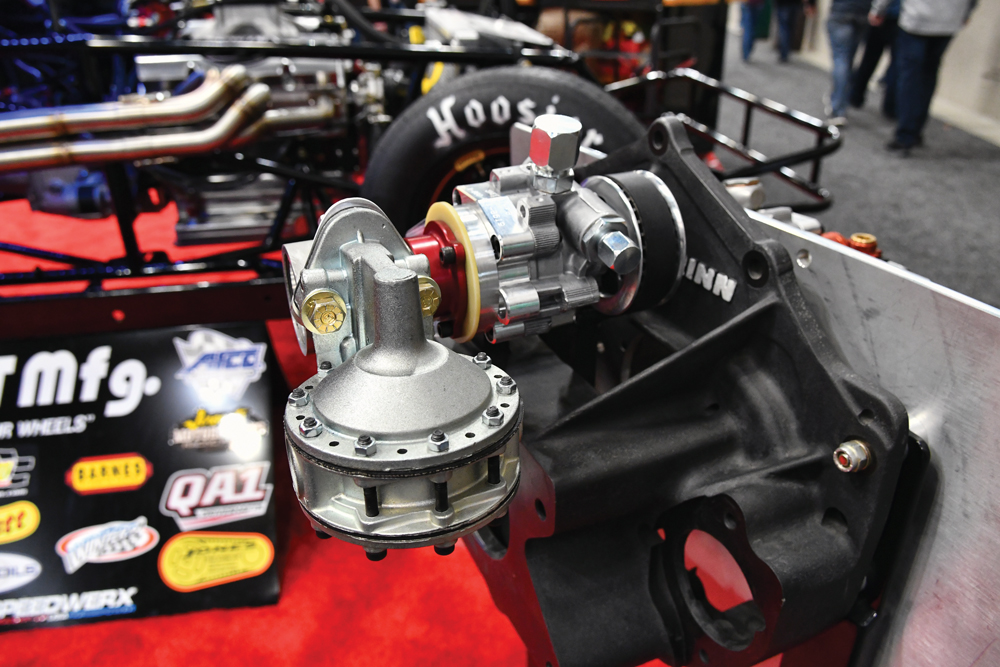
Can I use leaded racing fuel with my EFI system?
Leaded racing fuels will ruin the oxygen sensor, so it is not recommended for use in closed-loop EFI applications where real-time fuel adjustments are made based on data from the O2 sensor.
Another key point with a racing application is that there needs to be 18-plus inches of exhaust pipe from where the oxygen sensor is placed. This means that an open header is not a good location, unless you have a very long collector.
Lastly, when it comes to a speed-density system like FiTech, the EFI needs to read engine vacuum to determine the load on the motor. If the race engine has a large cam with lots of duration and valve overlap, this will cause tuning issues. A good rule of thumb is that the EFI needs a minimum of four to six inches of engine-produced vacuum at idle for the system to operate. This would also require additional tuning on engines with cams this large. —FiTech (Riverside, California)
My pressure is too low. How can I tell if the fuel-pressure regulator is malfunctioning?
While we speculate that mechanics like to blame the regulator right away—because it’s responsible for controlling pressure, right? The truth is, almost never is the component itself at fault.
The best approach to diagnosing a pressure problem is to consider the regulator as a relief valve, since that’s what it is. Once the pump is able to deliver enough flow rate to begin pressurization, until the pressure rises up to the set pressure, the regulator remains closed and [is] not allowing fuel to be returned back to the tank. Once the fuel pressure gets to the setting level, only then does it allow fuel to return back to the tank to control the pressure. Most of the time when the pressure is too low, it is because of the fuel pump or a fuel-pump installation error. —Fuelab (Collinsville, Illinois
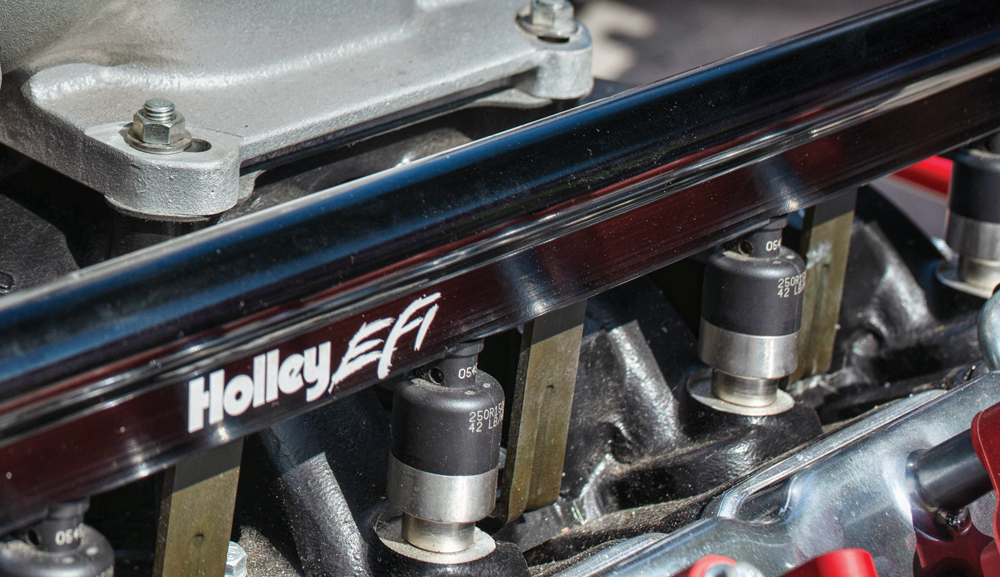
What is ‘Pulse Width Modulation’ and how is it beneficial?
With more advanced engine management systems available, customers are starting to learn more about PWM, or Pulse Width Modulation. We’re starting to see more people programming their ECUs to control the fuel pump, and the method of control is PWM. Although analog control is available and analog signals are easier to understand, more of the high-level ECUs on the market now have PWM outputs to control devices, such as our fuel pumps.
Think of PWM versus analog as the difference between FM radio and AM radio. FM radio signals are a lot clearer. A 12-volt pump can generate “dirty electrical noise,” and a PWM signal is unaffected by this noise.
Now tuners can set up the fuel pump to run on demand. The ECU already knows exactly how much fuel the engine needs at any one time—and it can use those parameters to control the fuel pump directly. With high-flow systems, there is heat buildup because you’re moving so much fuel. For these high-powered vehicles to run on the street, you don’t want to tax the electrical system and put all that energy into the fuel system. It can overheat and ruin the fuel pump, leaving you stranded. With the ECU controlling the fuel pump, you can now sit in traffic and not worry about the fuel system overheating. —Fuelab
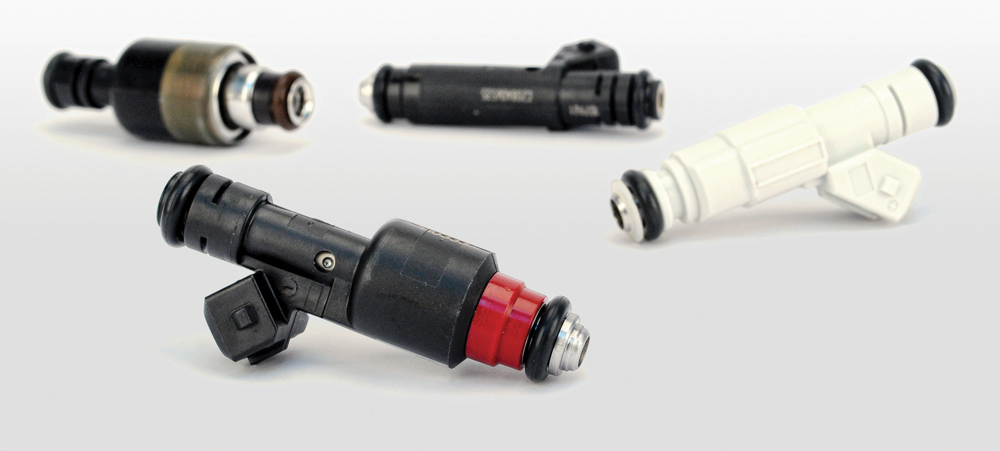
What size injector should I use for my application?
This is possibly the most-asked question regarding EFI, and certainly one of the most important. Key information is required before making this decision, including estimated flywheel horsepower, whether the engine is boosted or naturally aspirated (N/A), and the type of fuel. Now we can use a basic formula to determine the flow rate required by your engine.
First, take your target horsepower and multiply by: 0.5 for N/A; 0.6 for supercharged; 0.65 for turbocharged. Take that number and divide by the number of cylinders. Now, divide that number by .9. This represents a 90% duty cycle and will give you the lb/hr rating you’ll need for each injector using gasoline.
If you use an aftermarket fuel, then apply the following correction factors: Q16 x 1.09; E85 x 1.35; E98 x 1.40; Methanol x 2.00.
Here’s an example using this formula: 650 horsepower naturally aspirated V8; 650 x 0.5 = 325; 325/8 = 40.625; 40.625/0.9 = 45.1 lb/hr for gasoline or 60.9 lb/hr for E85.
If the formula results in a number that is not on a size chart for the brand of injector you’re considering, then the general rule is to round up to the next largest size. —FAST (Memphis, Tennessee)
What micron filter should I use to protect my EFI injectors running gasoline, and what if I switch to E85?
EFI injectors, all makes of pressure relief valves, and Lucas mechanical metering units need three-micron protection. However, three-micron filters plug up too quickly. Most racers use 10-micron, which is too coarse. We made this a new element for NASCAR Cup cars with a 10-micron premium paper top layer to take out 95% of the dirt, then added a three-micron precision fiberglass lower layer.
For reference, 25.4 micron equals .001-inch, so 10 micron will equal about .00039-inch, and three micron is .00012-inch.
—Kinsler Fuel Injection (Troy, Michigan)
I’m transplanting an EFI engine with a returnless fuel rail into a street rod. The fuel rail has a single line connection. Do I need a bypass regulator? How should it be plumbed? Can I mount the regulator back at the tank or should it be near the engine?
Yes, a bypass regulator with return line must still be used. Locating the regulator in the rear of the car can be done, but everything works better with the regulator as close to the fuel rail inlet as possible.
In order to use the returnless fuel rail that came on the engine from the factory, the bypass regulator must be located before the fuel rail. Since the stock returnless rails have only one connection point—that is, the inlet—an adapter fitting for the AN line is required. Aeromotive offers a number of OEM to AN adapters to help with this.
For optimum performance, including from the sharpest throttle response to the best hot start-up, your bypass regulator should be located in the engine compartment, as close to the fuel rail inlet as possible; and the return line will be the full length of the car.
Aeromotive EFI regulators P/N 13303 and 13138 are popular for returnless engine transplants. And be careful using a factory style filter-regulator if your fuel pump flows more than 200 liters per hour (LPH). —Aeromotive
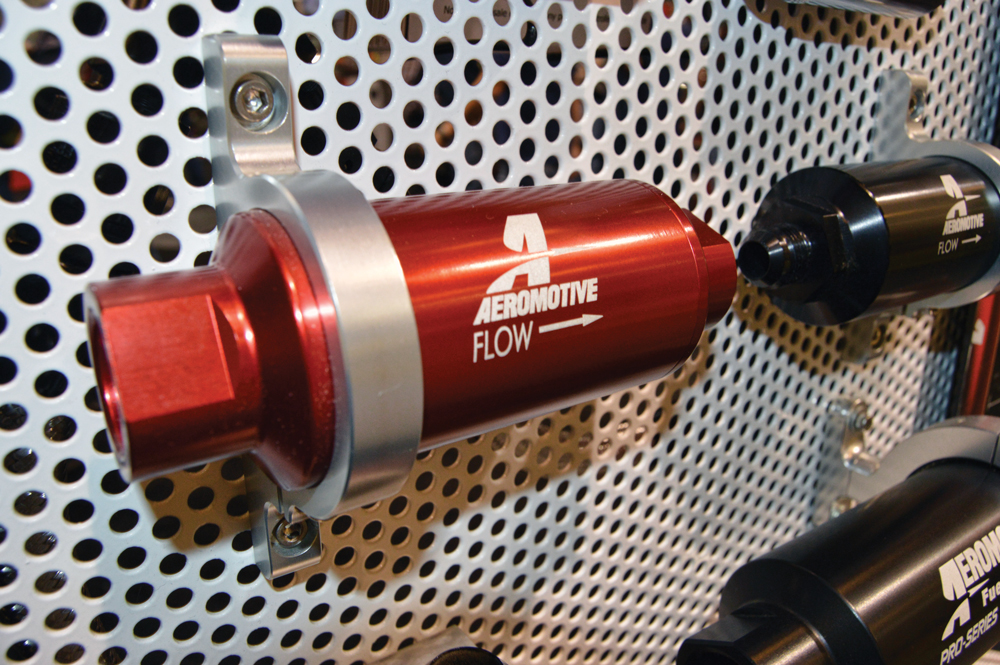
I want to use a dual-stage fuel system in my turbocharged drag car to eliminate the need for an intercooler. I want to run on high-octane fuel in vacuum and as boost pressure increases blend methanol for effective octane increase and cooling in the cylinders. What is the best way to achieve this using a standalone?
To achieve this, you need a standalone system equipped with enough injector outputs and capable of multi-stage injector control. The vehicle would also be fitted with two completely separate fuel systems capable of supplying the volumes needed for the application. Depending on the EFI system, the strategies may vary, but with our Infinity EMS you would need to characterize and input the primary and secondary fuel system flow characteristics as well as the fuel’s properties like stoichiometric ratio and specific gravity for each fuel so the system can properly calculate the injection pulse required to achieve a user-defined lambda target table. Since this system is a volumetric efficiency-based airflow model, you’d only need to define at which point the system transitions from one fuel system to the other. We also need to define how that transition happens using the multi-stage fuel system control features. The injection pulses per each fuel system is then calculated for a seamless transition. —AEM Performance Electronics
What’s the correct pump for my truck?
It’s not a question that can be easily answered. It all depends on the individual application. Obviously, we need to know the year and model, then it depends on what’s been done to the truck. Basically, we work off the current horsepower and what may be planned for the future. For example, at 600 horsepower, a 100-gallon-per-hour pump would be plenty. If under 900 horsepower, then step up to 165 gph. We also have 215 and 290 gph pumps for even higher horsepower applications. Then there’s a choice between the Titanium Signature Series with dual filters and FASS air separation, or the fully adjustable Signature Series. —FASS Diesel Fuel Systems (Marthasville, Missouri)
 MEMBERSHIP LOGIN
MEMBERSHIP LOGIN JOIN PRI
JOIN PRI


